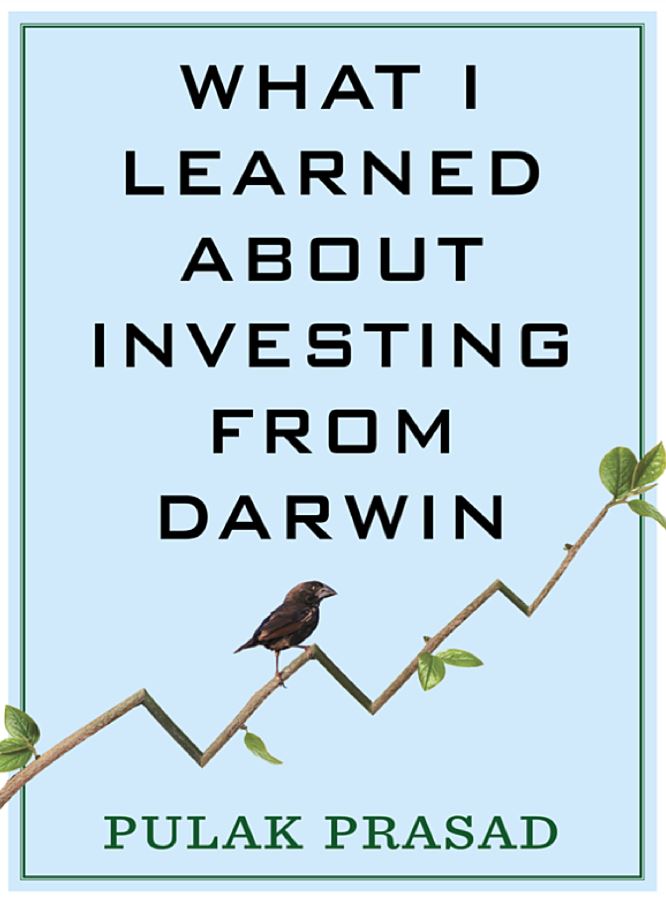
What I learned about Investing from Darwin
Pulak Prasad is the founder of Nalanda Capital, an India-focused long-only fund based out of Singapore with an AUM of ~US$5bn. This book is about investment philosophy of Nalanda Capital and how they approach investment management. The author has drawn investment lessons from evolutionary biology and infer these Darwinian concepts to investment strategy. One of the good features of the book is that every chapter starts with a key quote from Darwin and Warren Buffet; and ends with a 6-8 bullets summary of the chapter.
As per Pulak, there are 3 main factors to a successful investment strategy: 1) Avoid big risks, 2) Disciplined buying process and 3) Hold for long-term.
The Art of Great Rejection:
All investors make 2 mistakes: 1) Error of Commission (making a bad investment thinking it as a good one). 2) Error of Omission (rejecting a good investment thinking it’s a bad one). Risk of these 2 errors is inversely related. Simply put, if one tries to make too many investments, there will be lot many errors of commission – bad choices made. Conversely, if one tries to reject too many investments, one will miss out on good opportunities as well.
There are few cases which author has highlighted by avoiding: dodgy management/poor corporate governance, turnaround cases, high debt companies, companies always looking for M&A for growth, Govt. owned companies, fast-changing technology industries. However, he concedes that there is a downside in this: one can miss out on genuinely good companies where change is happening.
Buying High Quality at a Fair Price:
Pulak highlighted lot of criteria to select a good investment option. However, if there is one single variable which captures majority of them – its Return on Capital Employed, or RoCE in short. High ROCE is usually an indicator for good management quality, efficient capital allocation, building strong competitive advantage, balancing good growth along with profitability. The author highlights that best way to start is to look at “Historical” RoCE and not the estimated RoCE. The rationale for this is: whatever promise these qualitative aspects show, this has been captured historically in financial statements. The focus should be on analyzing the historic financials to understand the strategy and competitive positioning of the company. Selecting companies based on certain RoCE threshold helps in narrowing down the list further. The author detests excessive focus on macro-economic issues and instead advises to focus on micro issues of the company.
Long-term Investment (Lazy Investing):
The author uses quite a few examples in the portfolio to highlight the quality of the portfolio – wherein the companies have demonstrated good financial track record, good competitive positioning and increasing market share. However, he also mentions that these companies have been bought at much lower valuation in the past and they use short-term fluctuations to add or initiate a holding. In terms of holding period, he claims that the basic business fundamentals of good quality companies exhibit very little change over long periods of time. However, this change when looked over months/quarters looks high. This inference is drawn from the results of study of Bjorn Kurten (1959) and Peter & Rosemary Grant (2002), which indicated that pace of evolution is inversely proportional to the time of measurement. Pulak has adopted this approach and infers this to his own investing principle called Grant-Kurten principle of investing (GKPI) – which helps them to add to the holding due to short-term price fluctuations. Pulak highlights they are long term investors and don’t sell any holding due to valuation. Their selling is only because of poor capital allocation or change in fundamentals, which is beyond repair. The author believes strongly in compounding and has highlighted quite a few pointers to highlight benefits of not selling like long holding results in better returns, high return companies help in covering up for the poor return ones in the portfolio. The one which I liked the most is “not selling makes us better buyers” – as the new holding or buy will have to pass the muster of better return than the existing one.
I thoroughly enjoyed reading this book. As an investing professional, there’s not much new, but it gives a very good refresh to old proven investing principles. In fact, when I look at our own process, it is quite similar to the ones mentioned here. The key is to stay grounded to the same principles every time you look at a new company and it reinforces the lesson. It is also very interesting to see the analogies from evolutionary biology and seeing how he has connected these history lessons to investing. I think this is a very good starting book for a person from non-investing world, as this is very easy to read and quite an engaging book.
Saurabh Chugh
December 2023
